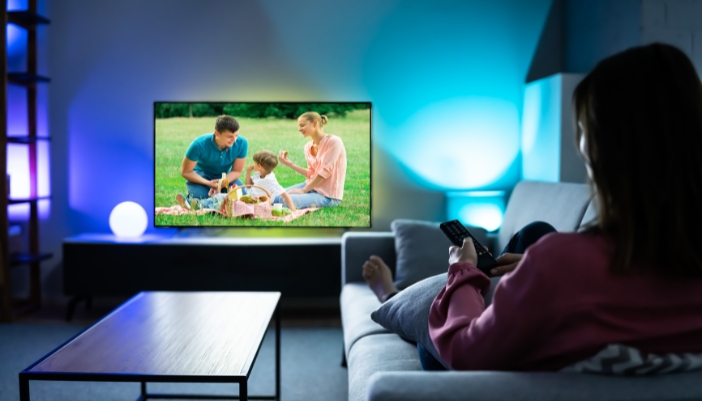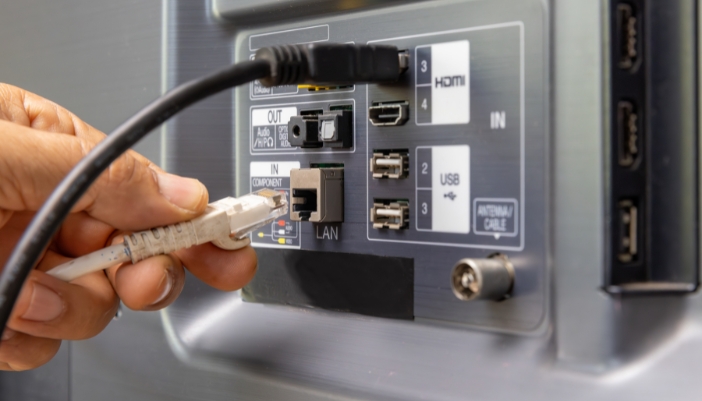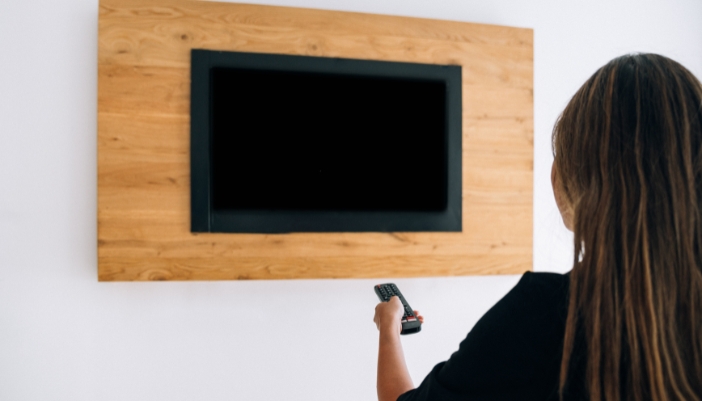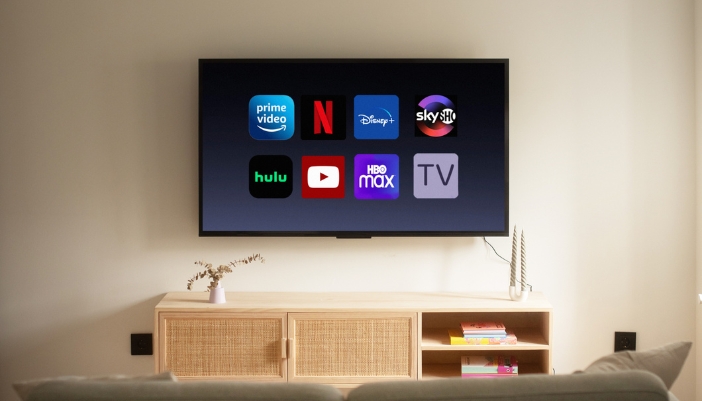Ultra High Definition (UHD) TVs have transformed how we enjoy our favorite shows, movies, and games, bringing stunning clarity and vibrant colors into our living rooms. But have you ever wondered what goes on inside these sleek screens?
There’s more to them than you might think! And since we at Plaza Electronics & Appliances are the experts, we’ll help you satisfy your curiosity and help you make more enlightened decisions when it comes to upgrading! Let’s take a tour through the innards of UHD TVs and see what makes them shine!
The Innards
- Display Panel
- Backlighting System
- Processor
- Connectivity Ports
- Audio System
- Cooling System
- Power Supply
- Software/Firmware
- User Interface
The Canvas

When it comes to UHD TVs, the display panel is the key component that determines the picture quality, color vibrancy, and overall viewing experience. But not all display panels are equal — there are several types to consider!
- LED: Uses LED backlighting, known for brightness and energy efficiency, but struggles with perfect blacks and has limited viewing angles.
- OLED: Each pixel emits its own light, offering superior contrast, perfect blacks, wide viewing angles, and faster refresh rates, which are ideal for fast-moving content.
- QLED: Uses quantum dots for enhanced color accuracy and high brightness, making it suitable for well-lit rooms but still relies on backlighting.
- MicroLED: Employs millions of tiny LEDs, combining high brightness and excellent color accuracy with the potential for perfect blacks and a longer lifespan without burn-in.
Let There Be Light
The backlighting system in a UHD TV is crucial for determining brightness, contrast, and overall picture quality. It works by placing LEDs behind or around the edges of the display panel to illuminate the screen. However, the type of backlighting used can significantly impact your viewing experience.
- Edge-Lit: LEDs are placed along the edges of the screen, directing light across the display. This method allows for thinner screens but can result in uneven brightness and lower contrast.
- Direct-Lit: LEDs are placed behind the entire screen, providing more uniform brightness than edge-lit systems. While better than edge-lit, it doesn't offer the precision control of more advanced methods.
- Full-Array: An advanced version of direct-lit, full-array systems have LEDs evenly distributed behind the screen and feature local dimming. This allows specific screen areas to dim independently, resulting in better contrast and deeper blacks.
- Mini-LED: A more recent technology, Mini-LED uses much smaller LEDs packed tightly together. This allows for even more precise local dimming, higher brightness, and better contrast than traditional full-array systems.
The Brains

Just like the brain in a human body, the processor in a UHD TV manages and coordinates all the crucial functions that deliver an exceptional viewing experience. From the crisp visual to the snappy smart features, a powerful processor can make all the difference!
- Image Processing: Enhances picture quality by upscaling lower-resolution content to UHD, reducing noise, and improving color accuracy.
- Smart Features: Supports apps, streaming services, and voice controls, ensuring a seamless user experience.
- Performance: A faster processor reduces lag and buffering, providing smoother playback and quicker navigation.
- Advanced Capabilities: Powers features like HDR (High Dynamic Range) and advanced motion handling significantly enhance overall picture quality.
Pro Tip:
Typically, TVs with features like HDR support, faster app loading times, and smoother navigations are indicators of a powerful processor!
The Hookup

Connecting all your favorite devices to your UHD TV is crucial for a seamless entertainment experience. Whether gaming, streaming, or watching a Blu-ray, having the right ports makes all the difference.
- HDMI: Essential for connecting devices like gaming consoles, Blu-ray players, and streaming devices. HDMI 2.1 is best for 4K content, gaming, and future-proofing.
- USB: Ideal for playing media from USB drives or connecting peripherals like webcams.
- Ethernet: Provides a stable, wired internet connection, which is great for uninterrupted streaming. This is especially useful if your wireless internet is unreliable.
- Optical/Audio Out: Connects external sound systems like soundbars or soundbar systems for enhanced audio.
Pro Tip:
Look for TVs with three to four HDMI ports to handle most of your devices!
Sound On
A great picture deserves equally great sound, and UHD TVs aim to deliver with their built-in audio systems. Many TVs include technology like Dolby Atmos for immersive three-dimensional sound or DTS (Digital Theater Systems) for high-quality surround sound.
However, since the built-in speakers are thin, they can struggle with bass and volume in large rooms. In this case, external sound systems like surround sound systems can offer better sound quality, deeper bass, and a more immersive experience!
Cool It
You might not think it, but TVs work hard, and with hard work comes heat — and lots of it. Thankfully, most TVs have effective cooling systems to prevent overheating and wear and tear on internal components, ensuring consistent picture quality! But there are two types of cooling: passive and active!
- Passive Cooling utilizes heat sinks and natural airflow that are silent, maintenance-free, and work great for standard usage. These are usually referenced as “fanless” or “passive cooling” in the specs.
- Active Cooling uses fans or liquid systems for more effective heat dissipation, which works better for high-performance needs like gaming, but they can be noisier.
Power It Up

Your UHD TV’s power supply unit (PSU) is the unsung hero, converting electricity from your outlet into the power your TV needs. It ensures a steady energy flow, maintaining optimal performance and preventing damage. The best PSUs (with a high-efficiency rating of 80 PLUS Gold or Platinum) will have overvoltage, overcurrent, thermal protection, and an Energy Star rating!
Got Smarts?

Have you ever wondered what keeps your UHD TV running smoothly and smartly? It’s all about the software and firmware working behind the scenes! The firmware manages the hardware and ensures smooth operation, while the software powers the operating system and apps for streaming, gaming, and more!
With regular updates to add new features and improve interfaces, you’ll always have the best performance and security for your data and resolve glitches faster!
The Real Magic
Navigating your UHD TV should be seamless and enjoyable, and that’s where the user interface (UI) comes in. A good UI makes accessing content, adjusting settings, and exploring features easy. Most UIs come with voice control, app integration, personalized recommendations, and smart home connectivity. But to make the most of your UI, make sure to follow these tips:
- Explore Settings: Spend some time in the settings menu to familiarize yourself with all available options.
- Use Voice Commands: Take advantage of voice control for quick searches and commands.
- Organize Apps: Arrange your most-used apps on the home screen for easy access.
- Update Regularly: Keep your TV’s software updated to enjoy the latest features and improvements.
- Learn Shortcuts: Discover and use shortcut buttons on your remote for faster navigation.
TV-Ology Unlocked!

Now that you know what makes a UHD TV tick, why not see these features in action? The best way is to upgrade to the best UHD TV model — you don’t want to miss out on the latest features! So, visit Plaza Electronics & Appliances to explore the most recent TVs from all the top brands!
And if you have questions about the perfect fit, don’t worry! Our experts are happy to lend a hand when you call or stop by!